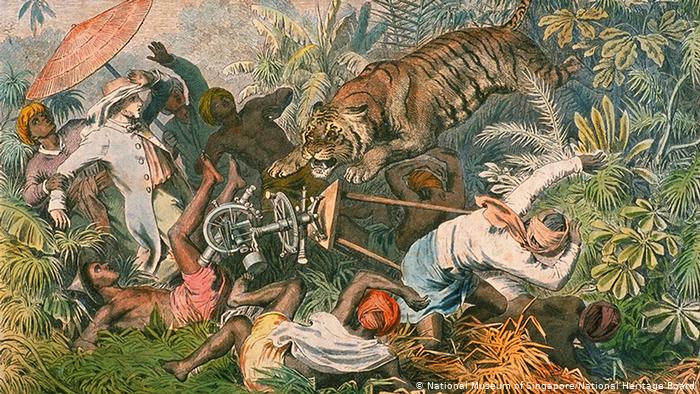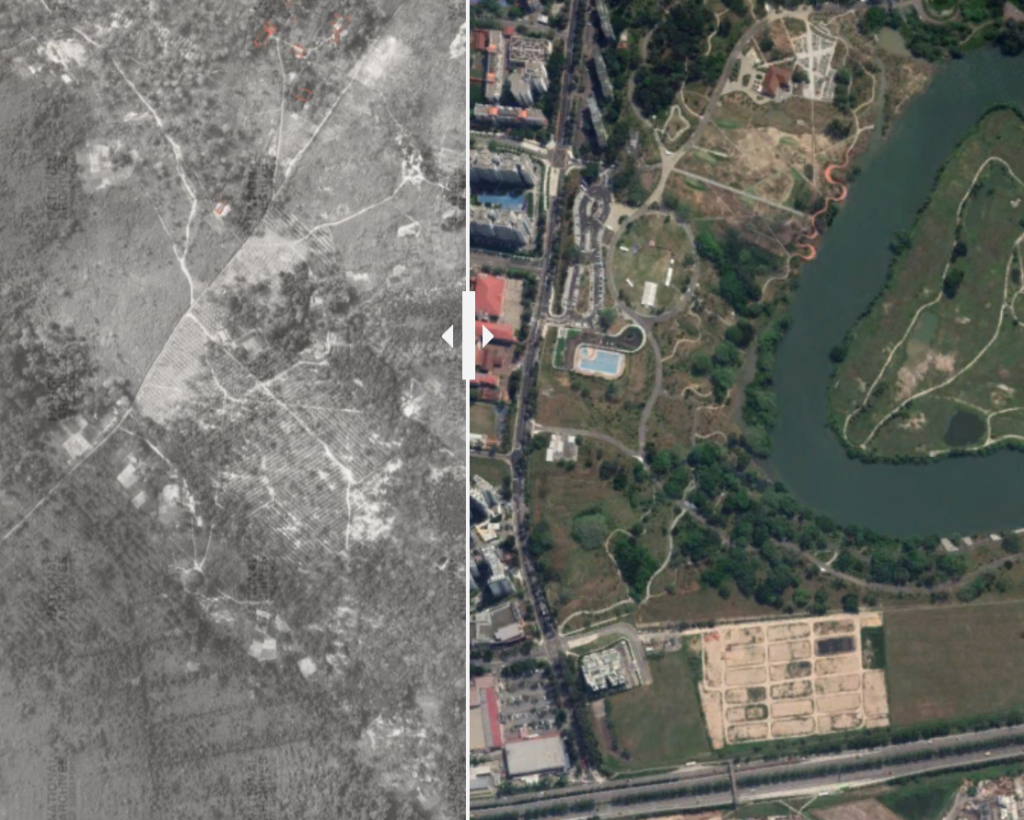Additional readings: Before & After Pictures Show How Deforestation Has Changed Singapore
_______________________________________________________
Glossary:
- Dipterocarp: A family of similar species of trees that are found in mainly tropical lowland rainforest. Trees from the Dipterocarpaceae family are among the tallest tree species in Asia.
_______________________________________________________
Once upon a time, in its pristine state, the island of Singapore was thought to be once densely covered with lowland mixed dipterocarp forest. Where rivers met the sea, mangrove forests flourished, while freshwater swamp forests sprawled further inland1. The original forest landscape was estimated to comprise 80% lowland mixed dipterocarp forest, 15% mangroves and 5% freshwater swamp forest2. Singapore was truly nature’s paradise – boasting a rich diversity of flora and fauna.

With the arrival of the British in 1819, the forest landscape underwent dramatic changes. For all their magnificence, much of the original forests had to go, in order to make way for development. Large patches of lowland mixed dipterocarp forests were cleared to obtain timber and fuel, as well as to create land for agricultural purposes, such as gambier and pepper1. These two cash crops were highly favoured in the early 19th century due to their profitability. However, their cultivation eventually rendered the land infertile and drove further deforestation3.
Fuelled by the lack of protective legislation, uncontrolled deforestation continued to such an extent that by the late 1800s, only several patches of forests remained. Eventually, a forest report spurred the colonial administration to take action, resulting in the creation of 12 forest reserves. Still, weak government support and enforcement meant that there were still leeways for further destruction. By 1936, Bukit Timah was the only forest reserve remaining while the rest had their status retracted3.

Prior to independence, mangrove forests were no less spared from the consequences of development efforts. Fortunately they were left relatively intact compared to inland forests as they were not suited for most forms of agriculture. The Pandan and Kranji mangroves were gazetted in 1939 to preserve them1.
By 1965, much of Singapore’s original inland forest habitats had largely been cleared for agriculture. Following independence, the need for rapid development and industrialisation posed another challenge for the natural vegetation.
Between 1967 to 1982, the urban area of Singapore increased by almost 80%. As a result, the land area occupied by forests (all types) and plantations decreased by 30%-40%4.
After independence, mangroves were cleared as wetlands were filled in to create land for development, such as in Jurong where the sprawling swamps gave way to the industrial estate of today5.

Later in the 1970s and 1980s, several rivers draining into the Johor Straits in the north and western parts of the island were dammed to create freshwater reservoirs6.
In spite of the sharp decline in forest cover, the government recognised the need to soften streetscapes in light of the rapid urbanisation. As such, the Garden City Programme was implemented in 1967, starting with fast-growing trees along roadsides, followed by the creation of more parks in the 1970s7.
In 1998, a new slogan “City in a Garden” was rolled out, aiming to incorporate greenery into the day to day lives of citizens and not just for the purpose of enhancing urban areas. Later on, the vision was updated yet again to “City in Nature”. Compared to past efforts which aimed to create greenery in the shortest possible time, the new approach was to adopt practices that could enhance urban biodiversity, such as the use of native plants in parks and gardens as well as the creation of nature ways to serve as ecological links between parks8.
More than 99% of Singapore’s primary forests have been deforested2, never to grace our landscape ever again. What little pristine forests that still stand today – 200 ha of lowland dipterocarp and freshwater swamp forests, amounting up to less than 0.3% of Singapore’s land area3 – are accorded full protection under the Parks and Trees Act.
Buffer zones adjacent to core nature reserves have also been established as nature parks and are relatively safe from encroachment9. However, development and urbanisation still pose a threat to young secondary forests that have grown on abandoned sites, many of which were plantations or villages in the past and await redevelopment. An example of this would be the Tengah forest. While not as rich in terms of flora and fauna compared to the more pristine forests, these sites still have some value as they serve as important linkways and buffer zones for the more pristine habitats10.
With the environmental crisis right at our doorstep, achieving the balance between urbanisation and conservation has never been a greater struggle. Will we continue to see our natural forests being encroached upon? Or is there a better way – one where we can coexist with nature?
References:
2. Lum, S. (2002, November). Tropical Rainforests. In Briffett, C. & Ho, H. C. (Eds.), State of the Natural Environment in Singapore (24-34).
6. Morgany, T., Sivasothi, N., Murphy, D. H., Ng, P. K., Soong, B. C., Tan, H. T., & Tan, T. K. (2002). A Guide to the Mangroves of Singapore 1. Singapore: Singapore Science Centre.



